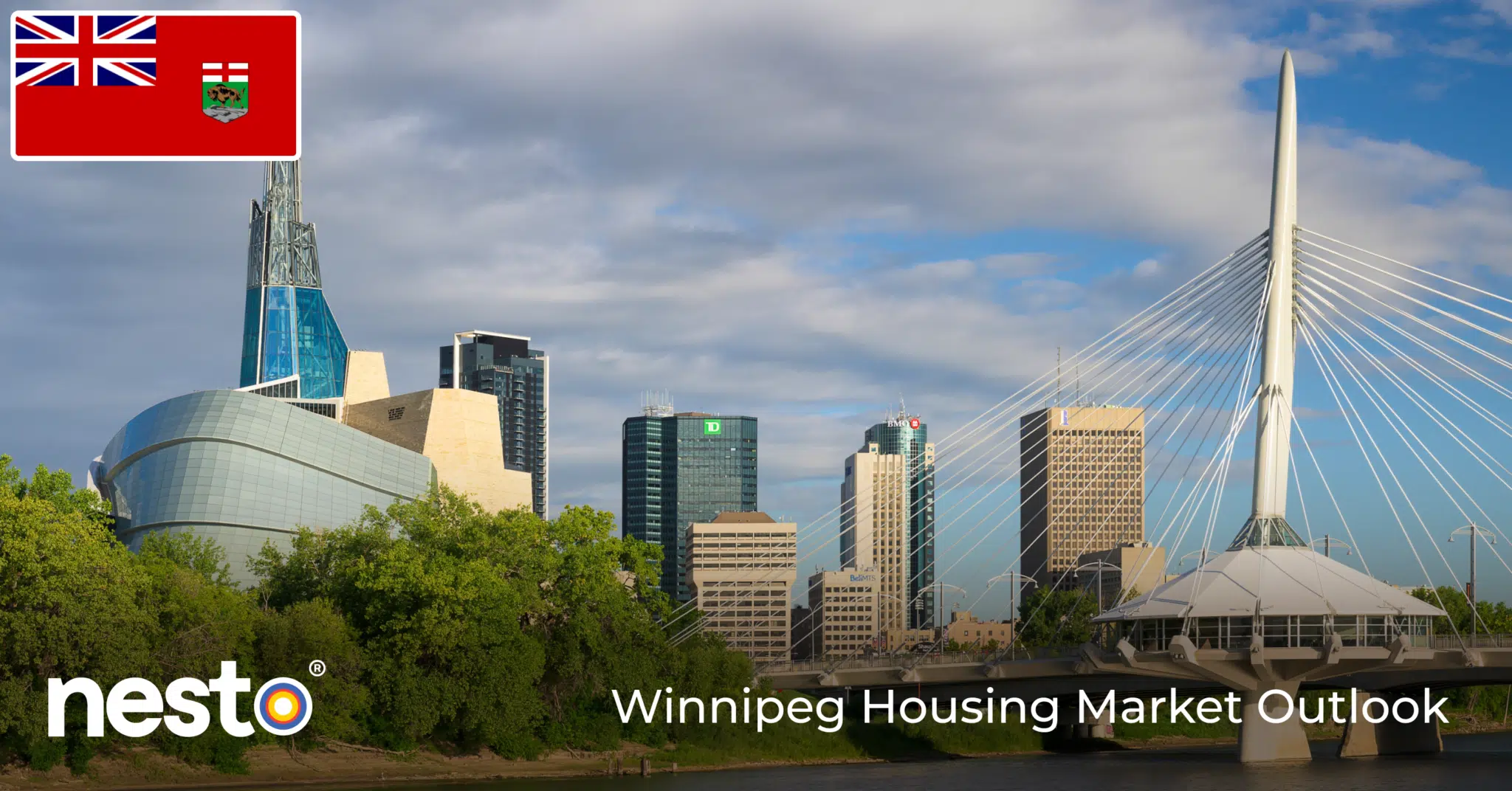Rent-to-Own Homes in Canada

Rent-to-own homes are often promoted as a pathway to homeownership for Canadians who may not yet qualify for a traditional mortgage. In this model, a tenant agrees to rent a property from a landlord, typically a rent-to-own company, with the option to buy the home later.
With rising home prices and tighter mortgage rules, many Canadians are exploring alternative homeownership models like rent-to-own. But while it can be a stepping stone toward buying a home, there are also risks involved. Understanding how rent-to-own agreements work will help you decide if they’re the right fit for your homeownership strategy.
Key Takeaways
- Rent-to-own lets tenants work toward homeownership while renting the home they plan to buy.
- A portion of monthly rent payments goes towards building equity and can be used as a down payment.
- Rent-to-own agreements can either provide the option to purchase or require the purchase at the end of the term.
What Is Rent-to-Own?
For many Canadians, the most significant barrier to buying a home is putting together a large enough down payment or meeting the mortgage stress test requirements. A rent-to-own agreement offers an alternative: instead of waiting until you qualify, you move into the home now under a special rental agreement that gives you the option to purchase the home later.
The rent-to-own structure is different from a standard rental lease. Part of your monthly rent is earmarked as a credit toward your future down payment. Once the agreement has been fulfilled, the tenant has the option to buy the property. The purchase price is set up front, which gives you predictability in planning but also comes with risks if housing values move in an unexpected direction.
How Rent-to-Own Agreements Work
Most rent-to-own agreements follow a similar structure, typically lasting between 1 and 5 years, allowing tenants to save money and improve their mortgage qualifications. Rent-to-own agreements can either be under a lease-option (option-to-purchase) or a lease-purchase agreement.
Most agreements require the tenant to pay an initial non-refundable option deposit, which is set as a percentage of the asking price of the home. Each month, the tenant pays more than they would under a typical lease, with the extra amount credited toward the eventual down payment for the purchase.
This system allows you to gradually build a down payment on the property you live in, but it comes at a higher monthly cost than renting. The locked-in purchase price is another prominent feature. If values rise sharply, the tenant wins by buying at a lower price. If prices fall, they may still be required to buy at the original price, which could leave them paying more than the market value.
Lease-Option Agreement
Under a lease-option or option-to-purchase agreement, you have the option to purchase the home at the agreed-upon price and are not obligated to purchase at the end of the rental period. This agreement allows for flexibility, giving the tenant the option to walk away at the end of the term without facing legal repercussions. However, if you choose not to exercise your purchase option, you will likely forfeit the option deposit paid at the beginning of the term.
Lease-Purchase Agreement
With a lease-purchase agreement, you are legally obligated to purchase the property at the end of the lease term. This agreement provides the tenant with little flexibility, locking them into the sale once the rental period ends. This type of agreement is binding, and failure to purchase for any reason may result in the loss of your option deposit, rent credits, plus legal and financial consequences.
Example of a Rent-to-Own Contract
If you agree to rent a home under a rent-to-own agreement over the next 5 years for $2,000 a month with $500 applied toward a future down payment, here’s what you could expect if the agreed-upon purchase price is $500,000:
Purchase Price: $500,000
Option Deposit (2%): $10,000
Monthly Rent: $2,000 ($1,500 toward rent each month and $500 toward your down payment)
Amount Owed (at end of term): $490,000 ($500,000 – $10,000)
Down Payment Contributions: $500 x 60 = $30,000
Mortgage Amount Required: $460,000
Pros and Cons of Rent-to-Own Homes
Choosing whether to enter a rent-to-own agreement is rarely straightforward. While these contracts can open the door to homeownership for those who need more time to save or strengthen their credit, they often come with higher costs and conditions that can put tenants at risk if circumstances change.
Advantages
- Build equity while renting: A portion of your monthly rent is credited toward a future down payment, which isn’t the case with traditional rent.
- Extra time to save: Agreements usually run anywhere from 1 to 5 years, giving tenants more breathing room to save for closing costs and improve financial readiness.
- Credit-building opportunity: Rent-to-own allows tenants with limited or damaged credit history to work toward qualifying for a mortgage during the rental period.
- Locked-in purchase price: If home values rise, you may benefit by buying at the lower, agreed-upon price.
Disadvantages
- Higher monthly costs: Payments are usually above market rent because part of each payment is allocated toward your down payment.
- Responsibility for maintenance: Many contracts shift upkeep and repair duties to the tenant, adding unexpected costs on top of higher rent.
- Limited flexibility: If your circumstances change, such as the need to relocate for a job opportunity or due to a change in family needs, you may not be able to walk away without losing money.
- Uncertain outcome: Even after years of paying into the agreement, you may not qualify for a mortgage when the contract ends, which can erase the benefits you were building toward.
Risks of Rent-to-Own Homes
Beyond the pros and cons, other financial risks can put tenants in a vulnerable position if circumstances change during a rent-to-own agreement. These risks are important to consider because they could lead to significant losses, even after years of careful planning.
Loss of Deposit and Accumulated Credits
If you are unable to qualify for a mortgage at the end of the contract, whether due to income changes, new debt, or market conditions, some agreements state that the deposit and credits are forfeited. This means you could lose thousands of dollars you’ve invested in the deal.
Overpaying Due to Locked-in Price
While a locked-in purchase price can be an advantage in a rising market, it can become a liability if home prices fall. You may be left paying above market value for the home, which could reduce your equity right from the start and make future refinancing or selling more difficult.
Financing Gaps if the Appraisal Comes in Lower
Lenders base mortgages on the home’s appraised value, not the contract price. If home prices fall, you may not be able to qualify for a larger mortgage if the home is appraised at a lower value. You may be required to contribute a much larger down payment than what you have accumulated under the agreement to cover the difference, making qualifying for financing even harder.
Return on Investment (ROI)
One of the less obvious risks of rent-to-own agreements is the uncertain return on investment. Unlike a traditional mortgage, where every payment builds equity in a property you already own, rent-to-own tenants are essentially investing in the possibility of ownership. If everything goes smoothly, the credits applied toward the down payment can give you a head start, but if you fail to qualify for financing or choose not to buy, that investment is usually lost.
Another important consideration is the opportunity cost of committing extra funds to a rent-to-own agreement. The additional money you pay above regular rent could instead be invested, for example, in a Tax-Free Savings Account (TFSA), First Home Savings Account (FHSA), or even conservative investment vehicles like GICs. Your down payment could have grown at a higher rate through an ongoing pre-authorized contribution (PAC) to a diversified portfolio, giving you more of a down payment to put toward a home after a few years, versus being paid monthly to someone else and not earning any returns.
Ownership and Continuity Risks
Another significant risk with rent-to-own agreements is what happens if the person or company you’re paying into can no longer honour the contract. If the homeowner who holds the title to the property passes away, the home may become part of their estate. This could trigger legal complications, delays, or disputes with heirs that could threaten your option to purchase, especially if the contract wasn’t properly registered or legally protected.
The same concern applies if you enter into a rent-to-own program run by a company. If that company goes bankrupt or dissolves, your payments and accumulated credits may be at risk. Unless the contract is structured in a way that secures your interest in the property, you may find yourself with little legal recourse to recover funds.
Limited Consumer Protections
Rent-to-own agreements are not overseen by the same rules that protect borrowers in Canada’s mortgage industry. This opens the door to predatory practices, poorly structured contracts, or disputes over what counts as rent versus down payment credits. Without strong legal safeguards, tenants may find themselves on the losing end of a contract that wasn’t designed with their interests in mind.
Income Requirement for Rent-to-Own Homes
Even though rent-to-own is marketed as a way to ease into homeownership, it still requires a stable and sufficient income. Rent-to-own programs typically have minimum income requirements to ensure that tenants can afford the monthly rent and eventually qualify for a mortgage. Each rent-to-own company establishes their own guidelines, which means that qualifying income can vary depending on the company you plan to set up an agreement with.
Qualifying for a Mortgage at the End of a Rent-To-Own Agreement
The bigger hurdle comes at the end of the rental contract, when the tenant must qualify for a traditional mortgage to complete the purchase. Lenders will assess income using the same rules that apply to all buyers, including debt service ratios and the mortgage stress test.
Even with credits built toward a down payment, you’ll need to show enough income to carry the mortgage based on the greater of your contract rate plus 2% or the minimum qualifying rate. If your income doesn’t meet lender thresholds, you may not be able to secure financing. A real possibility that could cause you to lose your deposit and the credits you’ve worked hard to build.
Rent-to-Own Companies in Canada
Since there are no federal or provincial regulations in the rent-to-own industry, the Canadian Association of Rent-to-Own Professionals (CAROP) provides quality control, minimum standards, and ethical guidelines for the industry.
Companies must meet eligibility criteria and adhere to the code of conduct to become a member. However, there are no requirements for companies to become members.
While many rent-to-own companies operate in Canada that connect tenants with properties, the following list is just some of those listed as members of CAROP.
- JAAG Properties Inc.: Providing real estate options for home buyers and investors. They are dedicated to helping individuals work toward homeownership while providing investment opportunities for investors.
- Fraser Valley Rent 2 Own: Helping families in the Fraser Valley and parts of the BC interior get on the path to homeownership. They offer 2 or 3-year programs.
- Calgary Rent To Buy: Helping everyday people in the Calgary area achieve the goal of homeownership. They offer 2 or 3-year terms.
- Home Owner Soon Inc.: Providing homeownership solutions Canada-wide since 2002.
- Homeowners Now Inc.: Canada’s leader in rent-to-own transactions serving nationwide.
While not listed as part of CAROP, Clover Properties is one of the most recognized rent-to-own companies helping families find homes in Ontario, Quebec and Alberta.
Alternatives to Rent-to-Own Homes
While rent-to-own can be one pathway to homeownership, Canadians have other options that may provide more flexibility or protection. Government-backed tools like the First Home Savings Account (FHSA) allow buyers to set aside funds tax-free for a down payment. The RRSP Home Buyers’ Plan (HBP) lets first-time buyers borrow from their registered retirement savings to purchase a home.
Other options include shared equity programs, where a government or non-profit shares part of the homeownership cost in exchange for equity, or co-ownership models. Each of these alternatives avoids some of the risks associated with rent-to-own, like the loss of your deposit and down payment credits, while still helping bridge the affordability gap.
Frequently Asked Questions (FAQ) About Rent-to-Own Homes
Is rent-to-own a good idea in today’s market?
Whether rent-to-own makes sense depends entirely on your circumstances. It can be a helpful option if you need time to save for a down payment, improve your credit, or if you find it challenging to stay disciplined with saving on your own. By building the savings component directly into your monthly rent, the program forces consistency that some buyers may struggle with otherwise. That said, it still carries risks if housing prices fall or if you can’t qualify for a mortgage once the contract ends.
What happens if I can’t buy the home at the end of the rent-to-own agreement?
Depending on the type of contract you signed, in most cases, you lose the deposit you put down at the beginning, and you may also lose any credits you’ve built up for the down payment. You may also face other legal and financial consequences if you signed a binding contract requiring the purchase at the end of the term. That’s why it’s critical to have a clear plan for qualifying for a mortgage before the contract expires.
Are rent-to-own homes legal in Canada?
Yes, rent-to-own agreements are legal, but they are not regulated in the same way as mortgages. This makes it even more important to work with trusted professionals and ensure your contract is transparent.
Final Thoughts
Rent-to-own agreements can serve as a bridge to homeownership for Canadians who are struggling with affordability or mortgage qualification. When structured carefully and paired with solid financial planning, they may be a good fit for those who need extra time to save for a down payment or rebuild their credit history.
For some, these agreements also work as a built-in savings plan for anyone who finds it difficult to save consistently on their own, since part of each rent payment is automatically directed toward future homeownership. Still, they are not without risk, and many buyers may find that traditional saving strategies or government-backed programs provide more security and flexibility.
If you’re weighing rent-to-own against other pathways, connect with a nesto mortgage expert. They can help you compare options, build a strategy suited to your financial goals, and ensure your long-term path to homeownership is the right one.
Why Choose nesto
At nesto, our commission-free mortgage experts, certified in multiple provinces, provide exceptional advice and service that exceeds industry standards. Our mortgage experts are salaried employees who provide impartial guidance on mortgage options tailored to your needs and are evaluated based on client satisfaction and the quality of their advice. nesto aims to transform the mortgage industry by providing honest advice and competitive rates through a 100% digital, transparent, and seamless process.
nesto is on a mission to offer a positive, empowering and transparent property financing experience – simplified from start to finish.
Contact our licensed and knowledgeable mortgage experts to find your best mortgage rate in Canada.
Ready to get started?
In just a few clicks, you can see our current rates. Then apply for your mortgage online in minutes!



